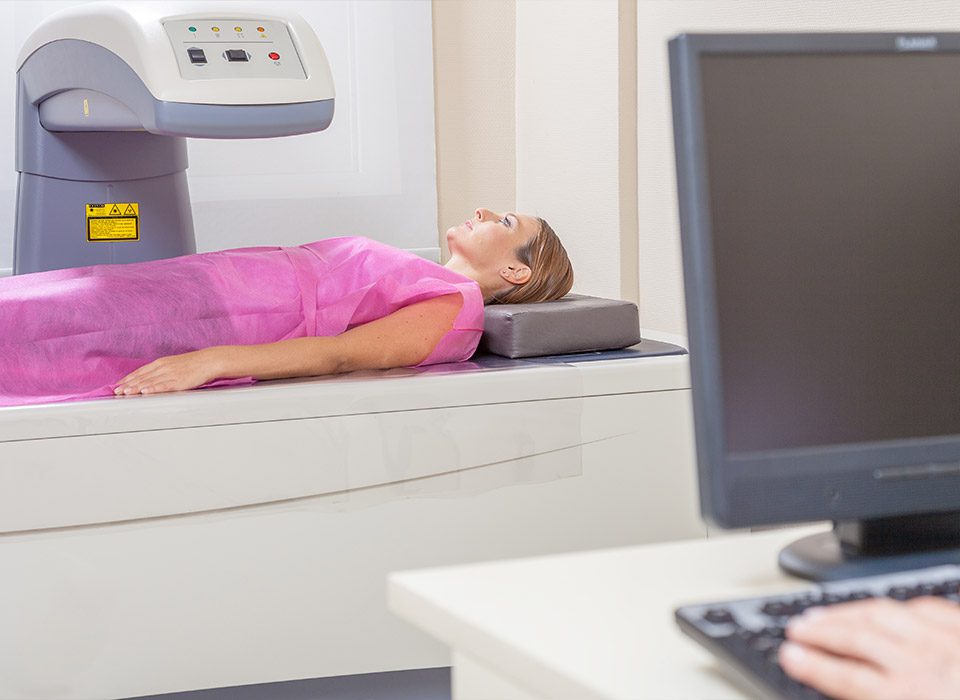Dual Energy X-ray Absorptiometry
Bone Density Scan is a test used to determine if you are suffering from osteoporosis.
Due to bone density scan now it has become easier to detect osteoporosis at the first stage itself.
The amount of bone measured by a particular scanner is known as “Bone Mineral Density or BMD”.
Osteoporosis is a disease that results in a significant risk of fracture.
The consequences of fracture can include hospitalization, immobility, a decrease in the quality of life, and even death. From a larger perspective, it is a costly disease in terms of the health-care system and time lost from work.
Early detection and therapy is the mainstay for trying to prevent these complications.
BMD testing results correlate well with the risk of fracture and the testing is easily performed in a time-efficient manner without any discomfort. Although many methods of BMD testing exist, the best currently is DEXA scanning. It is imperative that testing ultimately be done using state-of-the-art equipment with capable highly-trained personnel and a doctor well versed in interpreting the results.

Quick Facts about Bone Density Scan
• 40% of postmenopausal women in the India have Osteopenia (low bone density). An additional 7% have osteoporosis.
• BMD analysis is recommended for women between ages 50 and 65 with risk factors for osteoporosis and for all women over the age of 65. In addition,
men and women taking certain medications or having certain diseases should discuss testing with their doctor.
• It tests your bone strength (calcium in the bones) & detects the overall risk of fractures in future.
• By measuring BMD, it is possible to predict fracture risk in the same manner that measuring blood pressure can help predict the risk of stroke.
• DEXA is quick, painless and the preferred method to measure BMD. It takes 5 minutes and is completely noninvasive.






